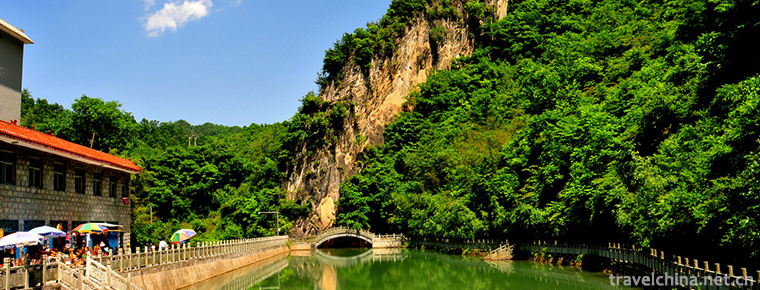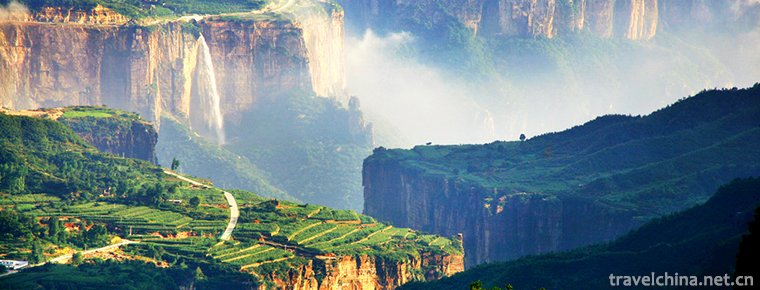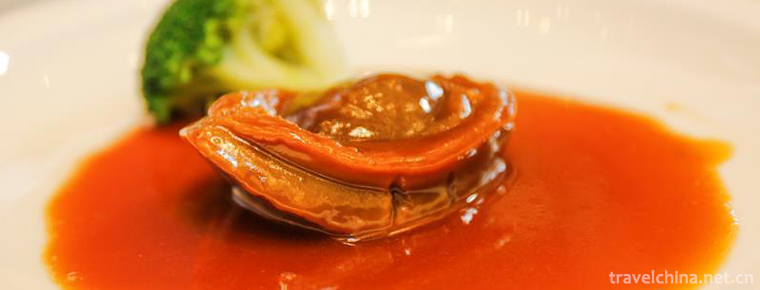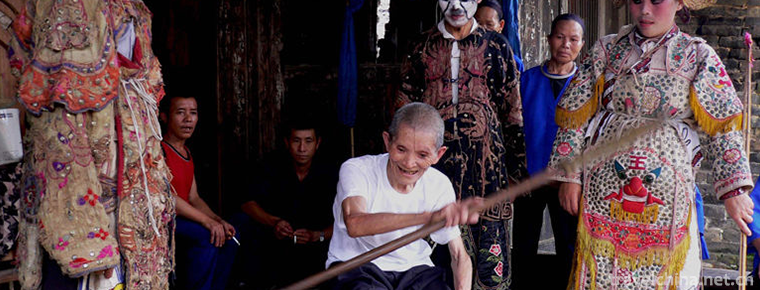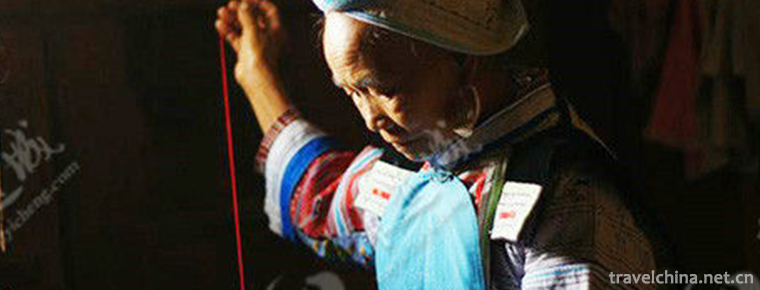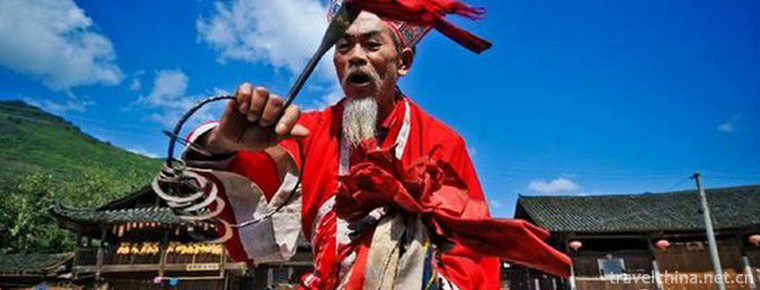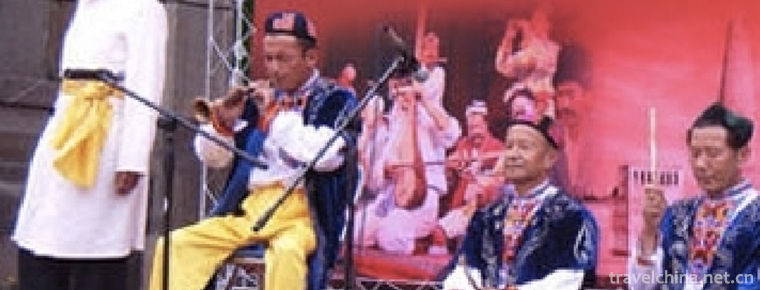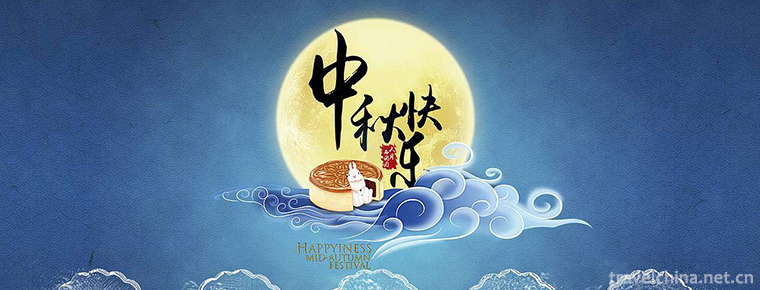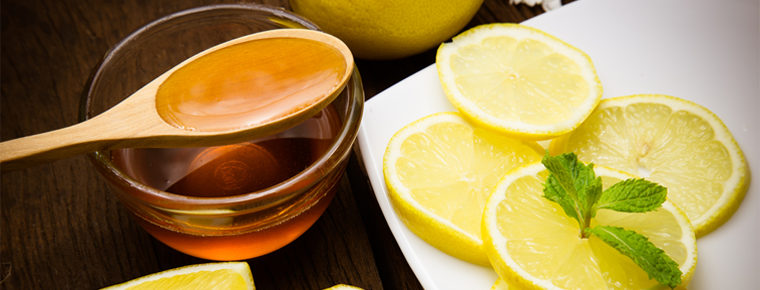Central Crossing of Flyover
Central Crossing of Flyover
Zhongbian is a local traditional folk acrobatics in Beijing. Beijing's overpass is a prosperous and lively civilian market with a long history, well-known at home and abroad. During the reign of Emperor Kangxi in Qing Dynasty, the skybridge market took shape. In the late Qing Dynasty and the early Republic of China, the skybridge market developed rapidly, and all kinds of acrobatics were widely used.
On May 20, 2006, the heritage was approved by the State Council and listed in the first batch of national intangible cultural heritage list.
brief introduction
Beijing's overpass is a prosperous and lively civilian market with a long history, well-known at home and abroad. During the reign of Emperor Kangxi in Qing Dynasty, the skybridge market took shape. In the late Qing Dynasty and the early Republic of China, the skybridge market developed rapidly, and all kinds of acrobatics were widely used. Particularly, performances such as Zhongjiao and Falling are the most popular among tourists.
The banner is a kind of flag with different sizes. Zhongbian is a kind of flag with gorgeous decoration, honor features and competition strength. Zhongbian originated from the flagpole of the Royal Guard of honor, and later evolved into a performance in folk temple fairs. Playing and dancing are traditional folk acrobatics in China, and the performances of playing and dancing are the most famous in Beijing overpass.
Tracing to the source
Zhongbian originated from the Jin Dynasty Royal Performing Event, also known as Yuan H. It is a banner with both honor features and competition strength. During the March or hunting break, flag bearers waved flags to cheer the emperor and inspire the fighting spirit of the three armies in order to relieve the emperor's depression.
The banner is magnificent in shape and clear in title. It is often used in honor activities. Flag-bearers can show their bravery and wisdom by playing banners. Therefore, Zhongbian was a necessary item for Buddha and celebrations in Qing Dynasty. Each group has its own flag in the walking meeting, and they compete to practice their stunt skills, gradually forming a quite unique acrobatic program.
Liu Dong and Yu Yizheng of the Ming Dynasty (Emperor Beijing Scenery) have been recorded. The Qing Dynasty's Bamboo Branch Ci recorded that "the banner is four or five feet high, hanging on the front of the bell and dancing for generations. The conductor is very satisfied, accompanied by the sound of golden drums, and the viewer is like a wall. "
During the reign of Qianlong in the Qing Dynasty, adding umbrellas to the original flagpole made it more beautiful to play. Later, the large flagpole with umbrellas was used by the royal palace as a guard of honor to greet diplomatic envoys, which became more majestic and solemn, so it was also known as the great deacon. Every year in the palace, great deacons are played to celebrate important celebrations. During the reign of Qianlong, the Zhongbian Society was under the jurisdiction of the Yellow Banner Inside, one of the eight classes of the society, which was crowned by the emperor and flourished for a time.
It is Wang Xiaopi who plays an important role in the development of Zhongpai. At that time, there were Zhongbian performances all over the country, but the forms of performances were different. By the end of the Qing Dynasty, Wang Xiaopi, an old Tianqiao artist, learned this art from his brother, who played the deacon in the palace, and renamed the great deacon Zhongpai, which became a performance of a commercial nature, and spread it to the people. Later, Bao Shanlin became an apprentice and passed on his stunt to Bao San. At the end of the Qing Dynasty and the beginning of the Republic of China, the Eight Banners'sons and daughters went to the flyover market to sell their art for their livelihoods, among which the most popular, popular and popular items were wrestling, performed by Shen San (Shen Yousan), Bao San (Bao Shanlin), Zhang Douzi (Zhang Wenshan).
In the 1950s, Mr. Bao Shanlin was in charge of the flyover play. Chen Jinquan, Ma Guibao, Fu Shunlu and Xu Mao, the third generation heirs, were in the flyover exercise. They attracted a large number of professional and amateur experts from all over the country to discuss their skills.
For historical reasons, from 1960s to 1970s, the once prosperous flyover market was cancelled, various kinds of literary and artistic performances were banned, and Baosanyi was cancelled at the same time. After the reform and opening up, the Xuanwu District Cultural Committee has carried out a series of cultural activities to excavate, sort out and protect the folk customs of overpasses with the aim of promoting the culture of Xuannan. Under the guidance and support of the District Culture Committee, Fu Wengang, the son of Mr. Fu Shunlu, established the "Baosan Folk Culture and Art Troupe of Beijing Fu's Flyover" to inherit a number of viable bridges.
After the founding of New China, under the leadership of Mr. Bao Shanlin, Tianqiao Baosan Wrestling Ground has been discussing skills with a large number of professional and amateur experts from all over the country. During the Cultural Revolution, the Baosanyichang disappeared with the flourishing overpass market. After the reform and opening up, Fu Wengang, the son of the third generation of heir Mr. Fu Shunlu, founded a non-governmental folk culture and art group, Baosan Folk Culture and Art, Beijing Fu's Tianqiao.
artistic characteristics
They are divided into three categories according to their size: Shuo Yi, Zhong Yi and Xiao Yi. Shuangyi is generally heavier and higher, usually more than 12 meters; Zhongyi is generally about 9 meters, most performers choose Zhongyi, so the term "playing Zhongyi" has spread; while Xiaoyi is only 3-4 meters, usually in small performances, such as theatres, teahouses and so on.
In the early stage, there were the terms of "building banner" and "carrying banner", and in the middle of the Qing Dynasty, there was a performance of "carrying banner skating" in Beihai Park in winter. The main stem of Zhongbo is a bamboo pole three feet long (more than 10 meters). On the top of the pole hangs a long brocade banner of 0.5 meters wide and 5.5 meters long. The front of the banner is embroidered with blessings and auspicious patterns. On the back, sometimes the name of the performing group is embroidered, so it is also called the flag. Zhongbo weighs more than 30 kilograms net. It is made of two bamboo poles. The size and flexibility of the poles are also exquisite. It takes about four years to make a finished product from a drum. Its production and processing procedures are still ancestral and refuse to leak.
From the technical point of view, Zhongyu includes techniques such as lifting clouds and hanging legs (kicking, drawing and kneeling). It not only trains people's courage, strength and skills, but also combines civil and military skills. In addition, Chinese wrestling and Qigong are also the basis of the practice of Zhongyu. Zhongbian is divided into single training, double training and collective training, with more than 50 movements.
When performing in Zhongbian, the artists hold up the pole in their hands and dance in many patterns. Their acting styles have their own image names. The pole is thrown up and held up with the head to hold the tripod for the overlord. The bamboo pole is supported on the ground with one leg and supported by one hand to support the golden chicken. In addition, there are dragon head, tiger tail-flicking, Fenghou hanging seal, Suqin sword-back, Taigong fishing, engine and other styles. There is also a layer or even several layers of round ornaments consisting of glaze, brocade, bells, flags and tassels on the top of the elegant central pole, which is called the Muluo Cover. It is not only colorful, but also makes a pleasant sound.
The performance of Zhongbian requires stability, accuracy and speed, and hand-eye coordination. In the performance, performers use the palm, back of hand, shoulder, forehead, jaw and other parts to complete lifting, top, toothsword, brain sword, single mountain and other movements, constantly shaking, throwing, falling. The performance of Zhongbian is guided by throwing high and standing steadily. Performers or crowns on the forehead, or stretching towers, thrilling movements continue, but always stay close to the body, poles do not fall to the ground. More than ten meters high, tens of kilograms of weight in the hands of the performers, shoulders, forehead, chin, neck back and other places up and down, alternately move. During the performance, colored silk facets were waving in the wind and copper bells were ringing on the roof.
Nowadays, with the development of Fuwengang, the fifth generation of footbridge heir, Zhongfan has become a thrilling and spectacular systematic performance project, which includes seven sets of drilling skills, including head, shoulder, elbow, hand, span, knee and foot, and nearly 100 sets of routines. With the efforts of several generations, the flyover has become a representative project of the old Beijing folk culture with its exquisite skills and funny performances.
Inheritance Significance
The banner in the overpass is the traditional stunt of the old overpass. Its performance form is that the performer touches a banner about 11 meters long with his hands or other parts of his body, and keeps the banner from leaving and the pole from falling to the ground. The 44-year-old Fu Wengang is the fifth generation of this stunt, and he is also the founder and leader of Baosan Folk Culture and Art Troupe of Beijing Fu's Flyover. Although Fu Wengang has 20 students and 8 apprentices, he is still worried about the inheritance of the banner in the overpass because fewer and fewer people are genuinely gifted and willing to inherit this skill.
At present, dancing banners have gradually become non-professional, and professional artists are scarce. In addition, the overpass acrobatics environment and performance form have changed. The playing banners skills are still in an endangered state, which needs further protection. Fu Wengang is still looking for successors. He intends to raise the production of the new Zhongbian to 20.08 meters high in order to meet the 2008 Olympic Games, and considers developing the new Zhongbian through the production of its cultural accessories.
The state attaches great importance to the protection of intangible cultural heritage. On May 20, 2006, the intangible cultural heritage was approved by the State Council and listed in the first batch of national intangible cultural heritage list. On June 5, 2007, Fu Wengang of Beijing was confirmed by the Ministry of Culture as the representative successor of this cultural heritage project and was listed in the list of 226 representative successors of the first batch of national intangible cultural heritage projects.

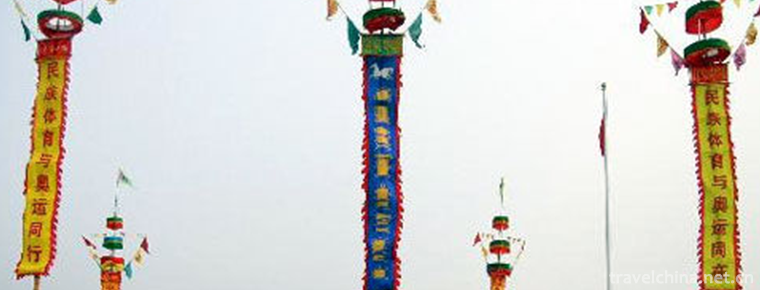
-
Jinsi Gorge Scenic Area
Jinsi Gorge Scenic Area of Shangluo City, Shaanxi Province, is located in the hinterland of Xinkailing in the southeast of Shangnan County, Shangluo City..
Views: 111 Time 2018-12-12 -
Beihai Ocean Window
The Beihai Ocean Window is situated on the shore of the rich and beautiful Beihai Bay in China. It covers an area of 2.1 hectares and covers an area of 18,100 square meters. It consists of mysterious .
Views: 141 Time 2018-12-26 -
Linzhou Taihang Grand Canyon Scenic Area
Taihang Grand Canyon Scenic Area is located in Linzhou City, northwest of Henan Province, on the eastern foot of the southern Taihang Mountains. It is 100 miles long in the north and south.
Views: 267 Time 2019-01-30 -
suyukou national forest park
Suyukou National Forest Park is located in Helan Mountain National Nature Reserve, 50 kilometers northwest of Yinchuan City, capital of Ningxia. It is a national 4A-level tourist attraction..
Views: 161 Time 2019-02-13 -
Eight dishes
Eight-flavor dish is a delicacy, the main ingredients are green pepper, 1000 grams; soybean, 1000 grams; head vegetables, 3000 grams; sugar, 250 grams; vinegar, 250 grams; salt, 250 grams; soy sauce, .
Views: 448 Time 2019-03-27 -
Dong Opera
Dong Opera, one of the national intangible cultural heritage, is a local traditional drama in Liping County, Guizhou Province, Tongtong Dong Autonomous County, Hunan Province and Sanjiang Dong Autonom.
Views: 209 Time 2019-04-27 -
Miao embroidery
Miao embroidery refers to the embroidery skills inherited by the Miao people in China. Miao embroidery in Leishan County, Guiyang City and Jianhe County of Guizhou Province has different forms and sty.
Views: 138 Time 2019-06-05 -
Timago of Tujia Nationality
The Tujia Tima song, also known as the "Tujia Tima Goddess Song", is an ancient song sung in Tujia language in the activities of Tujia Tima. It mainly distributes in Longshan, Yongshun, Baoj.
Views: 279 Time 2019-06-23 -
Uygur Drum Music
Uygur drumming music is a kind of national instrumental music widely circulated in the Uygur communities in the north and south of Tianshan Mountains, Xinjiang. Uygur drum music is an important kind o.
Views: 528 Time 2019-06-26 -
Mid Autumn Festival
Mid-Autumn Festival, also known as Moon Eve, Autumn Festival, Mid-Autumn Festival, August Festival, August Meeting, Moon Pursuit Festival, Playing Moon Festival, Moonworship Festival, Daughter's Festi.
Views: 130 Time 2019-08-03 -
Lemon Honey Tea
Honey lemon tea is made of honey and lemon. It has many functions such as whitening, nourishing, lowering blood fat, clearing heat, detoxifying, moistening and drying. Lemon contains vitamin B1, vitam.
Views: 358 Time 2020-03-16 -
Meishan Sports
In 2019, 45 games will be held and 30000 people will participate in the games. At the end of the year, there were 116 sports associations. By the end of the year, there were 1410 sports venues in the education system. Meishan post and telecommunication.
Views: 359 Time 2020-12-18
